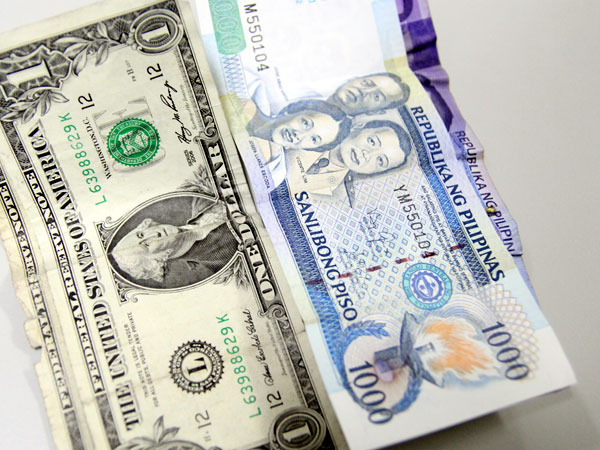
INQUIRER.net FILE PHOTO
With a weaker peso and the retail treasury bond (RTB) sale in June, the national government’s outstanding debt breached the P7-trillion mark last month, the Bureau of Treasury reported Friday night.
In a statement, the Treasury said that the outstanding debt stock amounted P7.016 trillion at end-June, up 2.7 percent from P6.833 trillion a month ago and 9.3-percent higher than the P6.417 trillion a year ago.
As of June, outstanding domestic debt hit P4.579 trillion, accounting for 65.3 percent of total obligations.
Domestic obligations rose 3.5 percent month-on-month and 9.4 percent year-on-year.
The Treasury blamed the month-on-month increase in local debt to “the net issuance of government securities amounting to P154.32 billion and peso depreciation that increased the value of onshore dollar bonds by P430 million.”
To recall, the government issued P121.8 billion in RTBs last June.
During its 21st RTB sale to small investors, the government sold three-year IOUs at 4.875 percent.
Meanwhile, the peso weakened to 53.404:$1 as of end-June from 52.554:$1 in May, the Treasury noted.
Foreign debt, meanwhile, reached P2.437 trillion, up 1.2 percent month-on-month and 9.3-percent larger year-on-year.
“The [month-on-month] increment in external debt was due to the weaker peso that increased the peso value of foreign exchange debt by P38.95 billion. This was partially offset by external loan net repayments amounting to P1.58 billion and the impact of net depreciation on third currency-denominated debt amounting to P8.5 billion,” the Treasury explained.
Despite the rising nominal value of debt, economic managers are insisting that levels remain manageable when measured against the growing economy.
“Those who raise the specter of a debt crisis arising from our use of official development assistance (ODA) to finance our infrastructure program are not reading the numbers well enough,” Finance Secretary Carlos G. Dominguez III said during the “Tatak ng Pagbabago: Tatak ng Pag-Unlad” Pre-State of the Nation Address (Sona) Forum of the Cabinet’s Economic Development Cluster early this month.
“The debt-to-GDP [gross domestic product] ratio held steady at 42.1 percent in 2017, same rate as in 2016. We continue to prudently manage our obligations and we are confident that the rapid expansion of the domestic economy will enable us to decrease our debt further to 39 percent of GDP in 2022,” according to Dominguez.
The government targets yearly GDP growth of 7-8 percent starting this year until 2022.
Last Wednesday, Budget Secretary Benjamin E. Diokno reiterated that “the right metric is not the size of debt itself, but the size of debt to GDP.”
“Our debt-to-GDP is about 40 percent and declining. We expect that by the end of our term, it will be 38-39 percent—we’re in good shape. If you have a debt-to-GDP ratio of 60 percent or lower, you’re in good shape. Japan’s ratio is 200 percent; the US has more than 100 percent,” Diokno noted. /jpv
RELATED STORY
Duterte not worried over China loans

